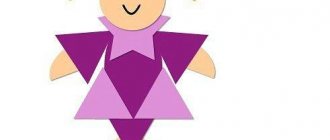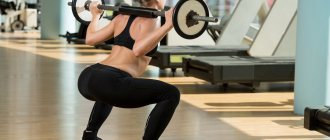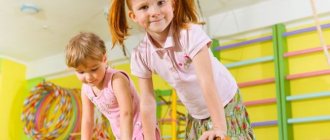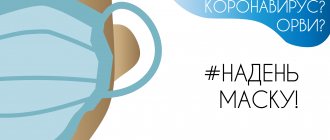EDUCATIONAL TRAINING COURSES. From the experience of MBDOU 217 - presentation
EDUCATIONAL TERRENCURS ON THE TERRITORY OF PRESIDENTIAL EDUCATIONAL INSTITUTIONS
From the experience of MBDOU 217 in Barnaul Several special educational routes of varying difficulty categories have been developed throughout the territory of the kindergarten, depending on the children’s health group, age, and interests. Several special educational routes of varying difficulty levels have been developed throughout the kindergarten territory, depending on the children’s health group, age, and interests.
Educational paths are specially organized routes for children through the territory of a preschool educational institution with visits to the asphalt play area, Centers for educational and research activities, environmental and health trails. Educational paths are specially organized routes for children through the territory of a preschool educational institution with visits to the asphalt play area, Centers for educational and research activities, environmental and health trails. Walks along the health path are carried out in natural conditions, in the fresh air, on the principle of gradually increasing the pace and physical activity, which promotes hardening, increasing physical endurance, and normalizing the psycho-emotional activity of children. Walks along the health path are carried out in natural conditions, in the fresh air, on the principle of gradually increasing the pace and physical activity, which promotes hardening, increasing physical endurance, and normalizing the psycho-emotional activity of children.
The territory of the preschool educational institution, along which there are several walking routes (terrenkurs), is a green area with favorable sanitary and hygienic conditions, intended for games, entertainment, physical education and cultural and educational activities for preschool children. The territory of the preschool educational institution, along which there are several walking routes (terrenkurs), is a green area with favorable sanitary and hygienic conditions, intended for games, entertainment, physical education and cultural and educational activities for preschool children.
The route includes not only specially created Centers, but also a sports ground, an asphalt games area, a health trail, an ecological trail, flower beds, a vegetable garden, a greenhouse and other possible objects on the territory of the preschool educational institution. The route includes not only specially created Centers, but also a sports ground, an asphalt games area, a health trail, an ecological trail, flower beds, a vegetable garden, a greenhouse and other possible objects on the territory of the preschool educational institution.
Walking structure: gathering and moving to the next stop on the path; collection and movement to the next stop on the path; stop, halt, cognitive and research activity of children and adults; stop, halt, cognitive and research activity of children and adults; a complex of recreational games and physical exercises; a complex of recreational games and physical exercises; independent activity of children; independent activity of children; collection of preschoolers and return to the group collection of preschoolers and return to the group
One of the ways to create a unified educational space for the development of a child, including the adjacent territory, may be the organization of Centers for cognitive and research activities on the territory of preschool educational institutions. One of the ways to create a unified educational space for the development of a child, including the adjacent territory, may be the organization of Centers for cognitive and research activities on the territory of preschool educational institutions.
The route is divided into several “stations” or houses. Each “station” can have its own name “Meteorological Laboratory” “In the Land of Fairy Tales” “Meadow of Heroes” “Bird Canteen” Recreation Center
While moving along the health path from one Center (or Home), children perform various exercises, conduct experiments, research, do mathematics, compose oral stories, study the properties of plants and traces of birds and animals, do physical exercises, play outdoor and asphalt games . While moving along the health path from one Center (or Home), children perform various exercises, conduct experiments, research, do mathematics, compose oral stories, study the properties of plants and traces of birds and animals, do physical exercises, play outdoor and asphalt games .
In such a play space, the child learns a lot - to communicate with the outside world, he develops large and fine motor skills, speech, intonation, eye, correlating movements. In such a play space, the child learns a lot - to communicate with the outside world, he develops large and fine motor skills, speech, intonation, eye, correlating movements.
The content of walking walks depends on the chosen topic, time of year and weather. In the content of the walk-terrenkur, teachers can include: educational conversations educational conversations observation of insects, birds, plants observation of insects, birds, plants collection of natural material collection of natural material familiar to children active and didactic games familiar to children, active and didactic games, attention games, attention games
sports games sports games a set of health-improving physical exercises depending on the time of year and weather conditions, age characteristics of children a set of health-improving physical exercises depending on the time of year and weather conditions, age characteristics of children
Health path from the experience of preschool educational institution 217 in Barnaul
“Samodelkin’s House” Tables, benches, canopy, containers for storage and sorting. Tables, benches, canopy, containers for storage and sorting. This is a kind of Workshop where you can create installations from waste material, cardboard, plastic bottles, old broken parts from various cars, mechanisms, etc. This is a kind of Workshop where you can create installations from waste material, cardboard, plastic bottles, old broken parts from various cars, mechanisms, etc.
"Musical Walls"
At the same time, not all “Houses” are stationary, they can be periodically changed depending on the play interests of children. At the same time, not all “Houses” are stationary, they can be periodically changed depending on the play interests of children
In hot weather, the “House of the Water Fairy” (rinse basin or inflatable pool) may appear. In hot weather, the “House of the Water Fairy” (rinse basin or inflatable pool) may appear.
autumn maze of dry leaves, winter snow maze
To create new Houses, it is most convenient to use portable flat layouts. To create new Houses, it is most convenient to use portable flat layouts.
The outline denotes some figure, for example, the fairy-tale character “Frog Princess”, “Baba Yaga”, “Thumbelina”, “Heel”, “Puss in Boots”, or the skeleton of a “rocket”, “mansion”, “Baba’s house” yagi." The outline denotes some figure, for example, the fairy-tale character “Frog Princess”, “Baba Yaga”, “Thumbelina”, “Heel”, “Puss in Boots”, or the skeleton of a “rocket”, “mansion”, “Baba’s house” yagi."
In winter, these can be snow sculptures and art objects
Playground complexes for groups of different ages should alternate with lawns, green areas of the free-use landscape, on which boulders, stumps, tree trunks, etc. are picturesquely scattered. Playground complexes for groups of different ages should alternate with lawns, green areas of the free-use landscape , on which boulders, stumps, tree trunks, etc. are picturesquely scattered.
The transformability of space implies the possibility of changes in the subject-spatial environment of the territory adjacent to the Organization, depending on the educational situation, including the changing interests and capabilities of children. The transformability of space implies the possibility of changes in the subject-spatial environment of the territory adjacent to the Organization, depending on the educational situation, including the changing interests and capabilities of children.
“Fairy Gardens” start-up 2014
"Moon Craters"
Entertaining and educational routes on the territory of the preschool educational institution. A playground on the asphalt, in addition to traditional classics, zigzags, paths, may include a “sound track” for kids. A playground on asphalt, in addition to the traditional classics, zigzags, and paths, may include a “sound track” for kids. When passing the sound track, stepping into a circle in which different animals are drawn, the child must make certain sounds “Moo-u”, “Quack-quack”, “Quack-quaw”, etc. When passing the sound track, stepping into a circle in which different animals are drawn, the child must make certain sounds “Moo-u”, “Quack-quack”, “Quack-quaw”, etc.
Repeat the count
Asphalt games area Stencils (painting with flour)
Color tricks
Painting with water on the asphalt
52 Drawing 3D
Characteristics of the developmental subject-game environment at the preschool educational institution site, taking into account the requirements of the Federal State Educational Standard: problem saturation; problematic saturation; openness to active development by the child, dialogical way of functioning; openness to active development by the child, dialogical way of functioning; unusualness; unusualness; clear design of subject development sources; clear design of subject development sources; multifunctionality; multifunctionality; adaptability to the needs of joint activities of children and adults. adaptability to the needs of joint activities of children and adults.
The experience is presented in the publication of Davydov O.I. Educational health paths on the territory of the kindergarten (cognitive and research activities of children during a walk, taking into account the requirements of the Federal State Educational Standard). – AltGPA, p. Davydova O.I. Educational health paths on the territory of the kindergarten (cognitive and research activities of children during a walk, taking into account the requirements of the Federal State Educational Standard). – AltGPA, p.
Educational path on the territory of preschool educational institutions
Educational health path on the territory of preschool educational institution No. 1964
Author: Moiseeva Natalya Valentinovna, teacher of Gymnasium No. 1503 in Moscow (SP DO 1964)
path for the second younger group
Description: This educational path is designed for children three to four years old, mainly with the second health group, using specially equipped preschool territory with favorable sanitary and hygienic conditions, intended for games, entertainment, physical education and cultural and educational activities for preschool children. We use the ecological space available on the territory of the preschool educational institution for educational and recreational purposes, to develop children’s work skills and communication with nature. Certain elements can be borrowed for older children. The material will be of interest to educators and parents. Goal : Priority use of the immediate natural environment that makes up the living space of children on the territory of the preschool educational institution. Tasks: Systematically monitor the plants in the green zone of the preschool educational institution. Help children understand the purpose of natural objects on the territory of the preschool educational institution. Gradually, consistently promote children's cognitive activity: from single sensory impressions, from objects and natural phenomena - to the diversity of these impressions, specific ideas. Systematically include children in sensory examinations of objects and natural phenomena and conduct experiments. Evoke positive emotions in children. Strengthen children's health. Carry out systematic physical exercise in the fresh air. The structure of walking includes: gathering and moving to the next stop on the path; stop, halt, cognitive and research activity of children and adults; a complex of recreational games and physical exercises; independent activity of children; gathering of preschoolers and returning to the group The walk begins from the fisherman's house, equipped on the territory of the preschool, where children, using turntables, check whether there is wind outside? (the turntables are kept in the fisherman's house).
Purpose: Conducting systematic observations of weather conditions. Children walk along a walking alley (examining exhibitions specially created on the territory of the Derevenka preschool educational institution, where the children are greeted by the cat Matroskin from Prostokvashino. Educational conversations are held, poems are read.
Based on questions from the cat Matroskin, further observations of the states of nature are carried out, the prerequisites for experimental activities are built (questions for each walk are prepared by the group teachers in accordance with the topic and weather conditions). A stop at the greenhouse , where the children are greeted by the little jackdaw from Prostokvashino. The bird conducts articulation gymnastics and physical exercises with children. Observations and experiments are carried out with natural materials.
Stop "Ogorod"
Solving “garden” riddles around the beds located on the territory of the preschool educational institution. Children are given knowledge about how to grow vegetables and how to eat them. Goal: To clarify children’s ideas about the external characteristic features of vegetables: color, size, their taste. Garden riddles. In the garden there grew a round, large one, a lot of green leaves, and only one leg. (cabbage) Before we ate it, everyone had time to cry. (onion) Red, long, sweet, bunnies, rabbits, and people love her very much. (carrots) Long and green in the garden, but salty in the jar. (cucumber) Stop “Phytogarden”, where medicinal herbs are planted (St. John’s wort, celandine, mint, lemon balm, calendula, coltsfoot). Goal: creating conditions for introducing children to the world of medicinal plants, developing an understanding of the role of plants in improving and maintaining human health. Stop "Fruit Garden"
Children can admire fruit trees and shrubs at different times of the year, compare them with other plantings, and watch how birds feed on them. Walking alley (examination of flower beds specially created on the territory of the preschool educational institution). In the warm season, the flower beds will contain a variety of insects (bees, wasps, bumblebees, butterflies, dragonflies), which will serve as objects of observation for children.
The “Bird Pillar” stop, where birds fly all year round: in the winter, birds are fed at its feeders, and in the summer they visit the watering hole, which is located at its base. You can introduce children to birds, including domestic ones.
Stop “Queen-Spruce” Purpose: comparison of spruce and birch. Children will learn what can grow under a spruce tree and what medicinal properties spruce has. Mathematical arch (on the asphalt near our site, the teacher draws geometric shapes with colored chalk: circles, squares, triangles).
Assignment for children: to get to their playground, you should go through a mathematical arch by jumping on geometric shapes that the teacher will name. Stop “Recreation area” A pre-prepared path is laid out in the area for group walks. At the end of the path, plastic bottles with colored water of different colors are placed - skittles. Children knock down improvised pins with small balls. Children can sit under awnings at tables. The children not only relax, but also share their impressions, drink water in the warm season, and can engage in making crafts, visual arts, and design.
Experiments are being carried out at the site. Experiments with water Purpose: identifying the properties of water. Water is pouring. Pour the water into a glass, ask the children to pour the water from palm to palm in a basin. (warm season) Water spreads: pour water onto a plate. The water is clear: place the toy behind a glass of water and a glass of milk. The water doesn’t smell: invite the children to smell the flower and the water and compare. Experiments with soil We consider the soil, what color is it - hard or soft? We invite children to knead the earth with their hands. The earth is soft and can be crushed. We take the earth in a fist, squeeze it, then pour the earth onto the patch - the earth crumbles. We find plant remains in the ground and examine them. Experiments with air Blowing soap bubbles. The wind is blowing across the sea: we launch boats in containers of water, blow on them, urging them to sail faster. Floats and sinks: show that all light objects have buoyancy.
Experiments with sand Solar circle: children stand in a circle and perform a set of health-improving and physical exercises.
Independent motor activity of children . Note: Depending on the time of year, seasonal games, entertainment, and experiments are organized on the site for group walks. For example, in the summer: drawing with a wet roller on the asphalt, playing with sand and water, a health path; In autumn: labyrinths of colorful leaves; In winter and spring: games and experiments with snow and ice. Gathering children and returning to the group : the path lies along a path with a pedestrian crossing and a traffic light, specially created on the territory of the preschool educational institution. Children walk, remembering the rules of the road, performing breathing exercises selected by the teacher.
Stop “At the pond”, where the frog lives. Children are given knowledge about the external characteristic features of a frog, that it is alive, and what it eats. Children's knowledge about the external characteristic features of insects is consolidated: butterflies, mosquitoes, flies. The distinctive features of insects from birds are clarified. We introduce children to the rules of behavior when encountering insects. We perform physical exercises “Frogs”, “Butterflies”. At the fisherman’s house, the cat Matroskin meets the children and asks about their mood, interesting things to do, what the children liked and didn’t like during their walk today. Children share their impressions of the walk and join the group.
We recommend watching:
Literary holiday in the 2nd junior group. Scenario Summary of GCD in the junior group on logorhythmics Summary of GCD for design in the second junior group of the preschool educational institution Summary of GCD in the junior group: Chicken Ryaba (lesson based on a fairy tale)
Similar articles:
Game activities of children of primary preschool age
Games for learning the seasons with children 3-4 years old
Educational games for children 3-5 years old. Hygiene rules and etiquette
Educational games for children 3-5 years old at home with parents
Organization of a walk in the junior group according to the Federal State Educational Standard
Educational health paths methodological development (middle group)
Komsomolsk-on-Amur
Educational paths
MDOU No. 136
Teacher Dziuba O.B.
2019
How to use the entire territory of the kindergarten for summer walks. Example routes
Goal: to raise healthy, comprehensively and harmoniously developed children.
Tasks:
- create safe conditions for walking with children;
- organize various types of children's activities taking into account the requirements;
- create conditions for the development in children of initiative, independence, the need for cognitive activity, physical activity, and a healthy lifestyle;
- teach how to independently choose the type of activity on the route of educational health paths.
How to develop educational routes
health paths
An educational path is a specially organized route for children through the territory of a kindergarten with favorable sanitary and hygienic conditions. When passing this route, teachers simultaneously solve the problems of improving the health and hardening of children, as well as educational, educational and developmental tasks.
To develop and organize educational paths, you need to create the necessary conditions. This work includes two stages:
At the first - theoretical - stage, teachers, together with a physical education instructor, examine the territory of the kindergarten, determine the location, content and design of stationary thematic stations. Then, together with the senior teacher, they develop measures to ensure the safety of children at each station and a calendar and thematic plan for educational paths for all age groups.
The second stage is practical. At this stage, teachers landscape the territory, design thematic stations in accordance with the requirements of protecting the life and health of children, make portable models, signs with the names of stations, signs for them, maps - route diagrams and organize walks with children.
There may be several thematic stations. Example: “Sportlandia”, “Green Pharmacy”, “Flower Garden”, “Bird Canteen”, “Sand Island”, “Road Rules”, “Vegetable Garden”, “Relaxation”. At each station, taking into account the topic, teachers organize physical activity, joint play, creative, cognitive and research activities for children, and observations.
In addition to stationary stations, the route may include mobile stations, the name and content of which teachers plan based on the tasks they face and the interests of the children, as well as environmental and health trails.
How to organize a walk along an educational path
Walking along educational paths should be carried out regularly during a morning or evening walk. Walking after meals is not recommended.
While driving along the route, it is important to follow safety rules and take into account the level of physical fitness of children. Preschoolers should be dressed in clothes that do not restrict their movement, are breathable, lightweight, and wear comfortable shoes.
Before the walk, the teacher, together with the preschoolers, determines the theme of the health path. Then the teacher sets goals, objectives, and plans the duration of the health path, taking into account the season and age of the children. The duration of the route for children 2-3 years old is 30 minutes (2-3 stations), for children 5-7 years old - 1-1.5 hours (6-7 stations).
Preschoolers choose the stations they would like to visit, and the teacher lays out a path - draws up a route map or uses a ready-made one from the card index of the kindergarten teaching room. In accordance with the theme of the walk, the teacher selects equipment, portable models and age-appropriate activities, games, breathing exercises, and physical exercises that they will perform along the way and at health path stations.
During the route, the teacher monitors the emotional and physical state, breathing and posture of preschoolers, the correctness of physical exercises, and, if necessary, adjusts the load. In addition, he monitors whether children follow safety precautions.
Examples of routes for children of all age groups are presented in the appendix. Thanks to this organization of walks, children will be constantly on the move, will be able to engage in cognitive and research activities, perform physical exercises, observe their surroundings, and show initiative and independence. A favorable climate will develop in the children's team, since, regardless of psychological and physical characteristics, each pupil feels successful.
During the implementation of the project, children will be less likely to miss kindergarten, and the incidence of illness will decrease. Educators will receive additional opportunities for the comprehensive development of preschool children, organizing environmental, patriotic, and moral education of children while introducing them to a healthy lifestyle.
In a preschool educational institution, you can create a card index of educational health path routes for all age groups, develop additional general development programs “Educational health path - a method of comprehensive development of preschool children in accordance with the requirements of the Federal State Educational Standard.”
Six requirements for organizing educational trails with children
- Take your children for a walk along the route only after it has been approved by the senior teacher.
- Before going for a walk, give children safety instructions.
- Consider the time of year and weather conditions when choosing a route.
- Consider the level of physical fitness, age characteristics and interests of children.
- Make sure that children's clothes and shoes are appropriate for the weather.
- Don't forget to take a first aid kit.
Examples of educational path routes in different age groups
Note: When moving from station to station, children perform breathing exercises and motor exercises.
| Route theme | Equipment | Route/content of activities |
| 2nd junior group | ||
| "Hot summer" | Natural and waste material, bucket, scoop, sieve, watering can with water, magnifying glass (according to the number of children), green and blue fabric, scooter, swimming ring, Panama hat, badminton, jump rope, umbrella | Station "Sand Island". Experimental activities with sand or building a sand castle (children's choice). Purpose: to introduce children to the composition of sand, to form an idea Station "Sportlandia" Outdoor game "Sun". Goal: to develop skills in spatial orientation, correct performing movements, activating vocabulary, enriching with concepts Station "Rest". Installation "Summer". Goal: to teach children to express creative ideas on a given topic and choose materials independently. Station "Green Pharmacy". Observation of chamomile. Goal: to consolidate knowledge about the main parts of a flower, its medicinal properties, and to cultivate a caring attitude towards plants. |
| Middle group | ||
| "Safety traffic" | Bicycles, scooters, cars, strollers, traffic lights, road signs, construction sets, toys - cars of various types of special equipment, hoops, balls, jump ropes (according to the number of children) | Station "Road Rules". Role-playing game "Drivers". Goal: to teach children traffic rules, safe behavior on the roads, and develop spatial orientation. Station "Sand Island". Sand construction using elements of the “Highway” construction set. Goal: to teach how to build buildings from sand, adding details from a construction set, to support independence, creativity, initiative, and imagination. Station "Rest". Guessing riddles on the topic “Road signs”. Goal: to consolidate knowledge of road signs and the ability to use them on the roads. Sportlandia station. Relay “Red. Yellow. Green". Goal: to develop thinking, visual attention, the ability to navigate the road in accordance with the traffic light signal, and to intensify physical activity. Station "Green Pharmacy". Observation of medicinal plants. Goal: consolidate knowledge about the benefits of medicinal plants, develop the ability to recognize and name them. |
| Senior group | ||
| “This is what it is, our summer” | Plant seeds, scoop and watering can (according to the number of children), Dr. Aibolit costume, medical attributes, animal masks, balls (2 pcs.), hoops (6 pcs.), rope, toys - ship, boat; shells, sea stones, other natural and waste materials | Station "Ogorod". Planting seeds (zucchini, cucumber, turnip). Goal: to develop skills in basic household work, knowledge about planting and growing plants from seeds. Station "Green Pharmacy". Theatrical production “The Good Doctor” Goal: to develop children’s creative abilities, the ability to convey the image of a hero using expressive means of speech, gestures, and facial expressions. Bird Dining Station. Observing the behavior of birds, listening to bird voices. Goal: to enrich ideas about birds, to develop the ability to correlate the singing of a bird with its image. Sportlandia station. Relay race “Stronger, higher, faster.” Goal: to create a desire to lead a healthy lifestyle, play sports, and increase the level of physical activity. Station "Sand Island". Creation of a sand panel “On the Seashore”. Goal: to develop the ability to express a creative idea on a given topic, to activate independent selection of materials, to encourage independence, creativity, initiative, and imagination. Station "Flower Garden". Compose a story based on observations of wildlife. Goal: learn to compose a descriptive story based on observations of living nature, develop verbal and logical thinking, the ability to speak out and listen carefully to others. |
| Preparatory group for school | ||
| "Summer red, be with me" | Music center, speakers, hoops (2 pcs.), balls (2 pcs.), wooden sticks (according to the number of children), bicycles (3 pcs.), toy cars (2 pcs.), natural and waste materials, easels, paper for drawing, brushes, paints, wax crayons, pencils | Station "Rest". Performance of the song “Let there always be sunshine” (music by A. Ostrovsky, lyrics by L. Oshanin). Goal: to develop children's creative abilities through musical activities, the ability to start singing after a loss, to sing expressively, to take a breath between short musical phrases. Sportlandia station. Relay race “Radiant Sun”. Goal: to consolidate the basic types of movements: walking, running; develop endurance, agility, coordination of movements. Station "Road Rules". Role-playing game “I am a pedestrian.” Goal: to consolidate knowledge of the rules for crossing streets and roads on a pedestrian Station "Sand Island". Writing math problems involving addition and subtraction. Goal: to consolidate ideas about the structure of problems, the ability to compose and solve mathematical problems on a visual basis. Station "Ogorod". Experimental activity “Growth of vegetable crops in the shade, in the sun.” Goal: to consolidate ideas about the conditions necessary for plant growth. Station "Flower Garden". Performing a plastic sketch “Flower Arrangement”. Goal: to develop creative imagination, develop the ability to improvise to music, independently find ways to convey musical images in movements, and support children's initiative. Bird Dining Station. Drawing a bird from life. Goal: to develop the experience of drawing from life, to activate the independent choice of materials to carry out the plan. |




